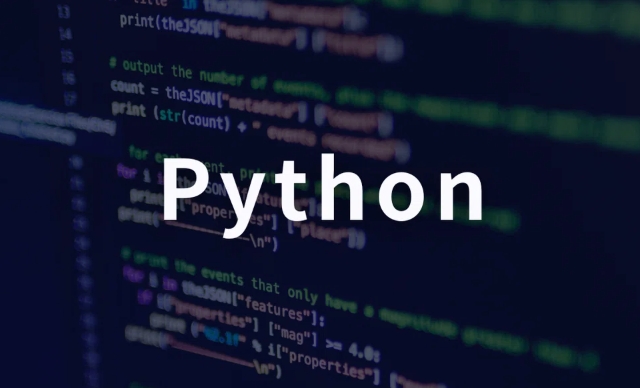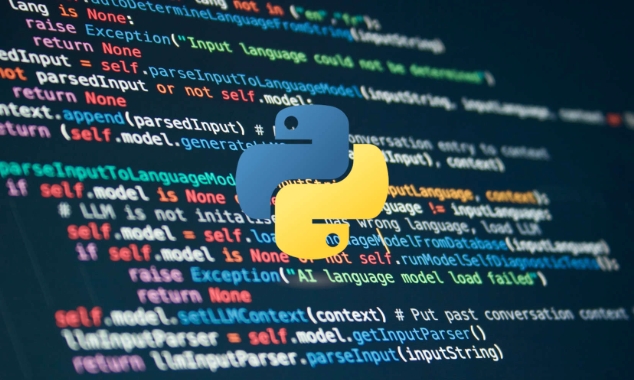The factory method pattern is a design pattern that instantiates specific classes through subclass decisions. It defines an interface to create objects, delaying the creation of objects to subclass processing, thereby achieving decoupling. This mode is suitable for scenarios such as hidden object creation details, uncertain future subclass types, and the need to call different objects in a unified interface. The implementation steps include: defining the base class or interface; creating multiple subclasses; writing factory functions or methods that return different instances according to parameters. Factory methods can be further encapsulated into classes to facilitate management of complex logic. When using it, you should pay attention to avoiding too many conditional judgments, preventing business logic from being mixed into the factory, avoiding over-design. It is also recommended to deal with abnormal inputs, keep the logic simple, and use it only when scalability is required.

The factory method pattern is actually quite common in Python, especially in scenarios where object creation logic needs to be flexibly expanded. It essentially uses a method to decide which class instance to create, rather than writing it to death directly in the code.

What is the factory method model?
Simply put, the factory method pattern is to define an interface (usually a method) for creating objects, but let the subclass decide which class to instantiate. The advantage of this is that the creation of objects is delayed to subclasses to process , thereby achieving decoupling.
For example, you have a base class Animal and then two subclasses Dog and Cat . You want to return different animal instances according to different inputs, and you can use the factory method.

class Animal:
def speak(self):
pass
class Dog(Animal):
def speak(self):
return "Woof!"
class Cat(Animal):
def speak(self):
return "Meow!"Then you can define a factory method to generate specific objects:
def animal_factory(animal_type):
if animal_type == "dog":
return Dog()
elif animal_type == "cat":
return Cat()Where is the factory method suitable for use?
- When you want to hide the specific details of the object creation
- When you are not sure which subclasses will be added in the future
- When your system needs multiple product families, or requires a unified interface to call different objects
For example, if you write a plugin system, each plugin needs to return a specific type of processor. You can use factory methods to dynamically load the corresponding class.

This pattern is also often used in conjunction with configuration files, such as reading the object type to be created from JSON or YAML files, and then handing it over to the factory method to generate an instance.
How to implement a simple factory method?
You can follow the following steps:
- Define a base class or interface
- Create multiple subclasses to inherit this base class
- Write a function or method to return different subclass instances according to the input parameters
It can also be further encapsulated into methods in a class, rather than separate functions. For example:
class AnimalFactory:
@staticmethod
def create_animal(animal_type):
if animal_type == "dog":
return Dog()
elif animal_type == "cat":
return Cat()The advantage of this approach is that it is easier to organize the code structure, especially when your factory logic becomes complicated.
A few points to note:
- If there are too many conditions, you can consider using dictionary mapping instead of if-else
- You can dynamically load classes with module import mechanism
- Don't let the factory take on too many responsibilities and maintain a single function
Frequently Asked Questions and Notes
Sometimes newbies may encounter these problems:
- Forgot to handle unsupported types, resulting in None being returned or an error being reported
- Stuff business logic into factory methods, causing maintenance difficulties
- Over-design, it is obvious that it only takes one if judgment to solve it, and it has to develop a complex factory system
So suggestion:
- Add the default branch to handle exception input
- Keep factory logic simple and clear
- This mode is only used when it is really necessary to expand and maintainability
Basically that's it. The factory method is not a must-have, but it is still very convenient to use in the right place.
The above is the detailed content of Factory Method Pattern in Python. For more information, please follow other related articles on the PHP Chinese website!

Hot AI Tools

Undress AI Tool
Undress images for free

Undresser.AI Undress
AI-powered app for creating realistic nude photos

AI Clothes Remover
Online AI tool for removing clothes from photos.

Clothoff.io
AI clothes remover

Video Face Swap
Swap faces in any video effortlessly with our completely free AI face swap tool!

Hot Article

Hot Tools

Notepad++7.3.1
Easy-to-use and free code editor

SublimeText3 Chinese version
Chinese version, very easy to use

Zend Studio 13.0.1
Powerful PHP integrated development environment

Dreamweaver CS6
Visual web development tools

SublimeText3 Mac version
God-level code editing software (SublimeText3)
 Polymorphism in python classes
Jul 05, 2025 am 02:58 AM
Polymorphism in python classes
Jul 05, 2025 am 02:58 AM
Polymorphism is a core concept in Python object-oriented programming, referring to "one interface, multiple implementations", allowing for unified processing of different types of objects. 1. Polymorphism is implemented through method rewriting. Subclasses can redefine parent class methods. For example, the spoke() method of Animal class has different implementations in Dog and Cat subclasses. 2. The practical uses of polymorphism include simplifying the code structure and enhancing scalability, such as calling the draw() method uniformly in the graphical drawing program, or handling the common behavior of different characters in game development. 3. Python implementation polymorphism needs to satisfy: the parent class defines a method, and the child class overrides the method, but does not require inheritance of the same parent class. As long as the object implements the same method, this is called the "duck type". 4. Things to note include the maintenance
 Explain Python generators and iterators.
Jul 05, 2025 am 02:55 AM
Explain Python generators and iterators.
Jul 05, 2025 am 02:55 AM
Iterators are objects that implement __iter__() and __next__() methods. The generator is a simplified version of iterators, which automatically implement these methods through the yield keyword. 1. The iterator returns an element every time he calls next() and throws a StopIteration exception when there are no more elements. 2. The generator uses function definition to generate data on demand, saving memory and supporting infinite sequences. 3. Use iterators when processing existing sets, use a generator when dynamically generating big data or lazy evaluation, such as loading line by line when reading large files. Note: Iterable objects such as lists are not iterators. They need to be recreated after the iterator reaches its end, and the generator can only traverse it once.
 How to handle API authentication in Python
Jul 13, 2025 am 02:22 AM
How to handle API authentication in Python
Jul 13, 2025 am 02:22 AM
The key to dealing with API authentication is to understand and use the authentication method correctly. 1. APIKey is the simplest authentication method, usually placed in the request header or URL parameters; 2. BasicAuth uses username and password for Base64 encoding transmission, which is suitable for internal systems; 3. OAuth2 needs to obtain the token first through client_id and client_secret, and then bring the BearerToken in the request header; 4. In order to deal with the token expiration, the token management class can be encapsulated and automatically refreshed the token; in short, selecting the appropriate method according to the document and safely storing the key information is the key.
 How to iterate over two lists at once Python
Jul 09, 2025 am 01:13 AM
How to iterate over two lists at once Python
Jul 09, 2025 am 01:13 AM
A common method to traverse two lists simultaneously in Python is to use the zip() function, which will pair multiple lists in order and be the shortest; if the list length is inconsistent, you can use itertools.zip_longest() to be the longest and fill in the missing values; combined with enumerate(), you can get the index at the same time. 1.zip() is concise and practical, suitable for paired data iteration; 2.zip_longest() can fill in the default value when dealing with inconsistent lengths; 3.enumerate(zip()) can obtain indexes during traversal, meeting the needs of a variety of complex scenarios.
 What are python iterators?
Jul 08, 2025 am 02:56 AM
What are python iterators?
Jul 08, 2025 am 02:56 AM
InPython,iteratorsareobjectsthatallowloopingthroughcollectionsbyimplementing__iter__()and__next__().1)Iteratorsworkviatheiteratorprotocol,using__iter__()toreturntheiteratorand__next__()toretrievethenextitemuntilStopIterationisraised.2)Aniterable(like
 Explain Python assertions.
Jul 07, 2025 am 12:14 AM
Explain Python assertions.
Jul 07, 2025 am 12:14 AM
Assert is an assertion tool used in Python for debugging, and throws an AssertionError when the condition is not met. Its syntax is assert condition plus optional error information, which is suitable for internal logic verification such as parameter checking, status confirmation, etc., but cannot be used for security or user input checking, and should be used in conjunction with clear prompt information. It is only available for auxiliary debugging in the development stage rather than substituting exception handling.
 What are Python type hints?
Jul 07, 2025 am 02:55 AM
What are Python type hints?
Jul 07, 2025 am 02:55 AM
TypehintsinPythonsolvetheproblemofambiguityandpotentialbugsindynamicallytypedcodebyallowingdeveloperstospecifyexpectedtypes.Theyenhancereadability,enableearlybugdetection,andimprovetoolingsupport.Typehintsareaddedusingacolon(:)forvariablesandparamete
 Python FastAPI tutorial
Jul 12, 2025 am 02:42 AM
Python FastAPI tutorial
Jul 12, 2025 am 02:42 AM
To create modern and efficient APIs using Python, FastAPI is recommended; it is based on standard Python type prompts and can automatically generate documents, with excellent performance. After installing FastAPI and ASGI server uvicorn, you can write interface code. By defining routes, writing processing functions, and returning data, APIs can be quickly built. FastAPI supports a variety of HTTP methods and provides automatically generated SwaggerUI and ReDoc documentation systems. URL parameters can be captured through path definition, while query parameters can be implemented by setting default values ??for function parameters. The rational use of Pydantic models can help improve development efficiency and accuracy.






